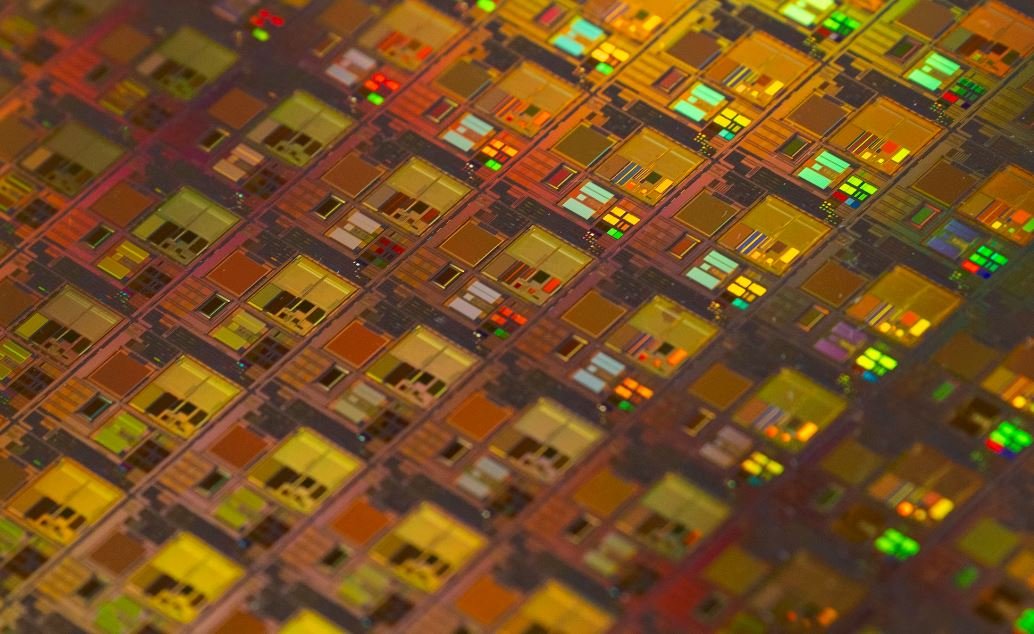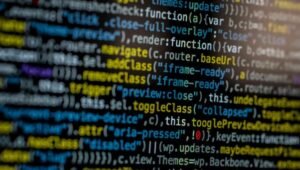How Close Are We to AI Robots?
The development of AI robots has been a topic of fascination and speculation, with both excitement and concern about their potential impact on various industries and society as a whole. As technology advances, the question arises: how close are we to having AI robots that can replicate human-like intelligence and perform complex tasks?
Key Takeaways:
- AI robots are rapidly evolving, but still have a long way to go to match human intelligence.
- The current state of AI robots is primarily focused on narrow tasks and specific applications.
- General-purpose AI robots, capable of human-level cognitive abilities, are still a theoretical goal.
*Recent advancements in AI and robotics have allowed for the creation of robots capable of performing specific tasks with a high level of accuracy and efficiency. However, *we are still far from achieving the level of cognitive abilities possessed by humans.
The Evolution of AI Robots
AI robots have come a long way since their inception. The field of robotics has witnessed significant advancements in areas such as perception, natural language processing, and machine learning, enabling robots to perform tasks that were previously deemed impossible.
- In the early stages, robots were limited to simple, pre-programmed tasks, such as assembly-line operations in manufacturing industries.
- With the advent of machine learning techniques and improvements in sensor technology, robots gained the ability to adapt and learn from their environment.
- Today, AI robots have become more autonomous and can perform complex tasks like surgical procedures, warehouse management, and even customer service interactions.
*The convergence of advanced algorithms, big data, and improved hardware has fueled the rapid progress of AI robots by enabling them to process vast amounts of information and make informed decisions based on complex patterns.
The Current State of AI Robots
At present, AI robots are primarily designed for specific applications and tasks, often referred to as narrow AI or weak AI. These robots excel in their respective domains but lack the broader cognitive capabilities that humans possess.
- Robots in the medical field can assist with surgeries, providing greater precision and reducing human error.
- In industries like logistics and warehousing, robots are used for inventory management, sorting, and transportation.
- Virtual assistants and chatbots serve as AI-powered customer support agents, handling simple queries and facilitating interactions.
*While AI robots have made significant contributions in these areas, *their capabilities remain limited to well-defined tasks and lack the versatility and adaptability of human intelligence.
The Challenges Ahead
Developing AI robots capable of human-level cognitive abilities and understanding is a complex challenge that involves several key obstacles.
- One major challenge is the ability to replicate the complexity of human thinking, which involves integrating various cognitive processes such as perception, reasoning, and learning into a single AI system.
- Another challenge is ensuring the ethical use of AI robots, addressing concerns about privacy, security, and the potential impact on employment and human relationships.
- Moreover, achieving human-like common sense reasoning and contextual understanding poses a significant hurdle in the path towards advanced AI robots.
*Overcoming these challenges will require continued research, collaboration, and innovation across multiple disciplines, including computer science, robotics, neuroscience, and ethics.
Interesting Data Points
| Year | Robot Population (Millions) |
|---|---|
| 2000 | 4.1 |
| 2010 | 8.6 |
| 2020 | 42.8 |
| 2030 | 190.7 |
*According to the International Federation of Robotics, the population of robots has been steadily increasing, with an estimated 42.8 million robots as of 2020, and projected growth to reach 190.7 million robots by 2030.
A Glimpse into the Future
While achieving AI robots with human-level intelligence is a distant goal, continued advancements in AI and robotics hold promise for the future.
- Further research in neural networks, deep learning, and reinforcement learning will aid in improving the cognitive capabilities of AI robots.
- Collaborative efforts between humans and robots, such as cobots (collaborative robots), will enhance productivity and safety in various industries.
- As AI technology matures, the integration of robots into everyday life could become more prevalent, providing companionship, assistance, and performing complex tasks in diverse settings.
*The future of AI robots presents a realm of possibilities, where they can augment human capabilities and contribute to a more efficient and innovative society.
Final Thoughts
AI robots have made significant strides in recent years, but we are still some distance away from achieving the vision of human-like robots. While progress is being made across various domains, such as medicine, manufacturing, and customer service, we are yet to witness the emergence of true general-purpose AI robots that can replicate human intelligence and perform a wide range of tasks.
Nonetheless, the ongoing developments in AI and robotics provide a glimpse of what the future may hold, with the potential for AI robots to further revolutionize industries and impact society in profound ways.

Common Misconceptions
AI Robots will replace all human jobs
One common misconception about AI robots is that they will completely replace human jobs in the near future. However, this is not entirely true. While AI technology has the potential to automate certain tasks and streamline processes, it is highly unlikely that humans will be entirely replaced by robots. Some relevant points to consider are:
- AI robots can only perform specific tasks and lack the adaptability, creativity, and emotional intelligence that humans possess.
- Many jobs require human interaction, empathy, and decision-making abilities, which are difficult for AI robots to replicate.
- AI robots are more likely to augment human capabilities rather than replace humans entirely, by working alongside humans and assisting with certain tasks.
AI Robots are already as intelligent as humans
Another common misconception is that AI robots are already on par with human intelligence. However, current AI technology has its limitations and is far from matching human cognitive abilities. Some relevant points to consider are:
- AI robots often rely on predefined algorithms and patterns to perform tasks and lack the ability to think abstractly and apply contextual knowledge.
- While AI can excel at specific tasks like data analysis or playing chess, it lacks the general intelligence and common sense that humans possess.
- Human brains are highly complex and have the ability to learn, reason, and adapt in a way that current AI technology cannot replicate.
AI Robots are a threat to humanity
Many people believe that AI robots pose a significant threat to humanity, as portrayed in science fiction movies. However, this misconception can be attributed to a lack of understanding of the current state of AI technology. Some relevant points to consider are:
- AI technology is designed and developed by humans, and its potential risks can be mitigated through proper ethics and regulations.
- Current AI robots are limited to narrow domains and are not capable of causing harm outside of their specific tasks.
- It is crucial to ensure that AI systems are developed with human values in mind and to establish frameworks for responsible use of AI technology.
AI Robots have consciousness
There is a common misconception that AI robots possess consciousness or self-awareness. However, this is not the case. Current AI systems lack the ability to experience subjective consciousness. Some relevant points to consider are:
- AI robots are programmed to follow predefined rules and algorithms, and their actions are based solely on data and calculations.
- Consciousness involves subjective experience, awareness, and the ability to perceive emotions, which current AI technology does not possess.
- While AI robots can mimic human-like behaviors and responses, they do not have true consciousness or the ability to understand their own existence.

Background Information on Robotics
Before diving into the current advancements in AI-powered robots, it is important to understand the unique capabilities and functionalities of robotics. This table provides an overview of the different types of robots based on their design and application.
| Type of Robot | Design | Application |
|---|---|---|
| Industrial Robot | Arm-like structure with multiple degrees of freedom | Manufacturing, assembly, and production lines |
| Humanoid Robot | Resembles the human body in form and structure | Research, entertainment, and assistance |
| Military Robot | Various designs for surveillance, combat, and support | Military operations, reconnaissance, bomb disposal |
| Medical Robot | Specialized tools and arms for precision surgery | Minimally invasive surgery, rehabilitation, assistance |
Advancements in AI Robotics
AI-driven robots have witnessed remarkable progress over the years, pushing boundaries and entering new frontiers. This table highlights the breakthroughs and notable achievements in the field of AI and robotics.
| Advancement | Description | Year |
|---|---|---|
| Deep Learning | Robots capable of learning from large datasets | 2012 |
| Autonomous Vehicles | Self-driving cars exploring public roads | 2016 |
| Machine Vision | Robots with advanced visual perception | 2015 |
| Natural Language Processing | Robots understanding and interacting using human language | 2017 |
Challenges in AI Development
While AI robots continue to advance, numerous challenges impede their full realization. This table presents some of the key hurdles faced by AI researchers and roboticists.
| Challenge | Description | Solution |
|---|---|---|
| Ethical Implications | Addressing issues related to privacy and accountability | Developing ethical frameworks and legislation |
| Data Privacy | Ensuring protection of personal information | Robust encryption and secure data handling |
| Job Displacement | Potential loss of jobs due to automation | Reskilling workforce and providing transition support |
| Autonomy | Balancing autonomous decision-making with human oversight | Development of explainable AI and transparency |
AI Robots in Everyday Life
AI-powered robots are increasingly finding their way into our daily lives, offering a wide range of applications. This table showcases the integration of robotics in various sectors.
| Sector | Use of AI Robots |
|---|---|
| Healthcare | Assisting in surgeries, patient care, and diagnostics |
| Education | Enhancing learning through interactive robotic tutors |
| Agriculture | Autonomous farm robots for planting and harvesting |
| Hospitality | Robots for room service, customer assistance, and entertainment |
Impact of AI Robots on Industries
AI robotics is revolutionizing various industries, reshaping business models, and enhancing productivity. This table highlights the transformative effects of AI robots on specific sectors.
| Industry | Impact of AI Robots |
|---|---|
| Manufacturing | Increased automation, improved efficiency, and quality |
| Transportation | Safer, autonomous vehicles and optimized logistics |
| Retail | Streamlined supply chain, personalized customer experiences |
| Finance | Predictive analytics, fraud detection, and trading automation |
Collaboration Between Humans and Robots
Increasingly, humans are working alongside AI-powered robots in collaborative environments. This table showcases the benefits and roles humans and robots play in collaboration.
| Collaboration Scenario | Benefits | Roles |
|---|---|---|
| Manufacturing | Improved efficiency, faster production | Robots performing repetitive tasks, humans overseeing |
| Healthcare | Enhanced patient care, precision surgeries | Robots assisting medical professionals |
| Exploration | Remote exploration in hazardous environments | Robots performing non-safe tasks, humans monitoring |
| Construction | Increase in productivity, reduced labor-intensive work | Robots handling physical labor, humans managing |
Ethical Considerations in AI Robotics
The development and use of AI robots raise numerous ethical concerns. This table presents some key ethical considerations and their implications.
| Consideration | Implications |
|---|---|
| Data Privacy | Potential misuse of personal information |
| Unemployment | Job displacement and economic inequality |
| Autonomous Decision-making | Accountability and bias in AI algorithms |
| Human-Robot Interaction | Ensuring transparent and ethical interactions |
Future Possibilities and Limitations
As AI robotic technology progresses, we explore the possibilities and evaluate the limitations that lie ahead. This table sheds light on potential advancements and challenges on the horizon.
| Possibility | Description |
|---|---|
| Advanced Artificial Intelligence | Robots with human-level or surpassing intelligence |
| Robot-Human Integration | Seamless integration of robots in our daily lives |
| Regulatory Frameworks | Developing robust guidelines for robotics applications |
| Ethical Challenges | Addressing ethical dilemmas related to AI robots |
AI robotics is rapidly evolving and transforming the way we work, live, and interact with machines. With each advancement, new possibilities and ethical dilemmas arise. It is crucial for researchers, policymakers, and society as a whole to navigate this ever-changing landscape, ensuring that AI robots contribute positively to the progress of humanity.




